Abstract
Tenderness in the anatomical snuff box (ASB) has long been accepted as an indicator of a possible scaphoid fracture. The longitudinal axis of the scaphoid lies in an anteroposterior plane, perpendicular to the remainder of the carpal bones, in the radially deviated wrist. The scaphoid tubercle can therefore be easily and accurately palpated on the palmar aspect of the radially deviated wrist. This study was devised to determine if tenderness over the scaphoid tubercle (ST) was superior to ASB tenderness in identifying definite fractures. Over a 10-month period 246 patients were seen who were suspected of having a scaphoid injury. Thirty (12%) were eventually proven to have definite fracture. Tenderness in the ASB had a sensitivity rate of 90% (95% confidence limits 80-100%) and specificity of 40% (33-47%) as an indicator of a definite fracture. ST tenderness had a sensitivity of 87% (75-99%) and specificity of 57% (50-64%). There is therefore no significant difference in the sensitivity between ASB and ST tenderness but ST tenderness is significantly more specific. However, the presence of either ASB or ST tenderness should be used in order to identify all fractures. Patients with neither ASB nor ST tenderness require symptomatic treatment only.
Full text
PDF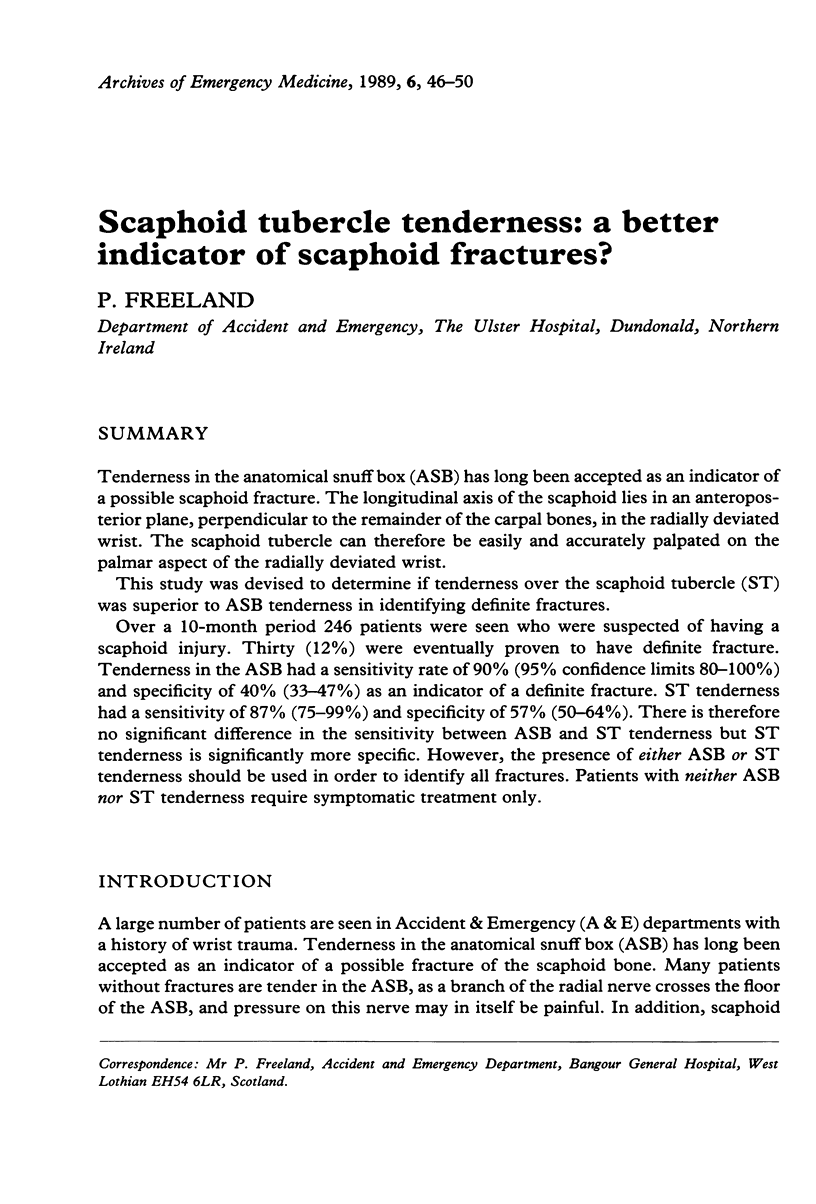
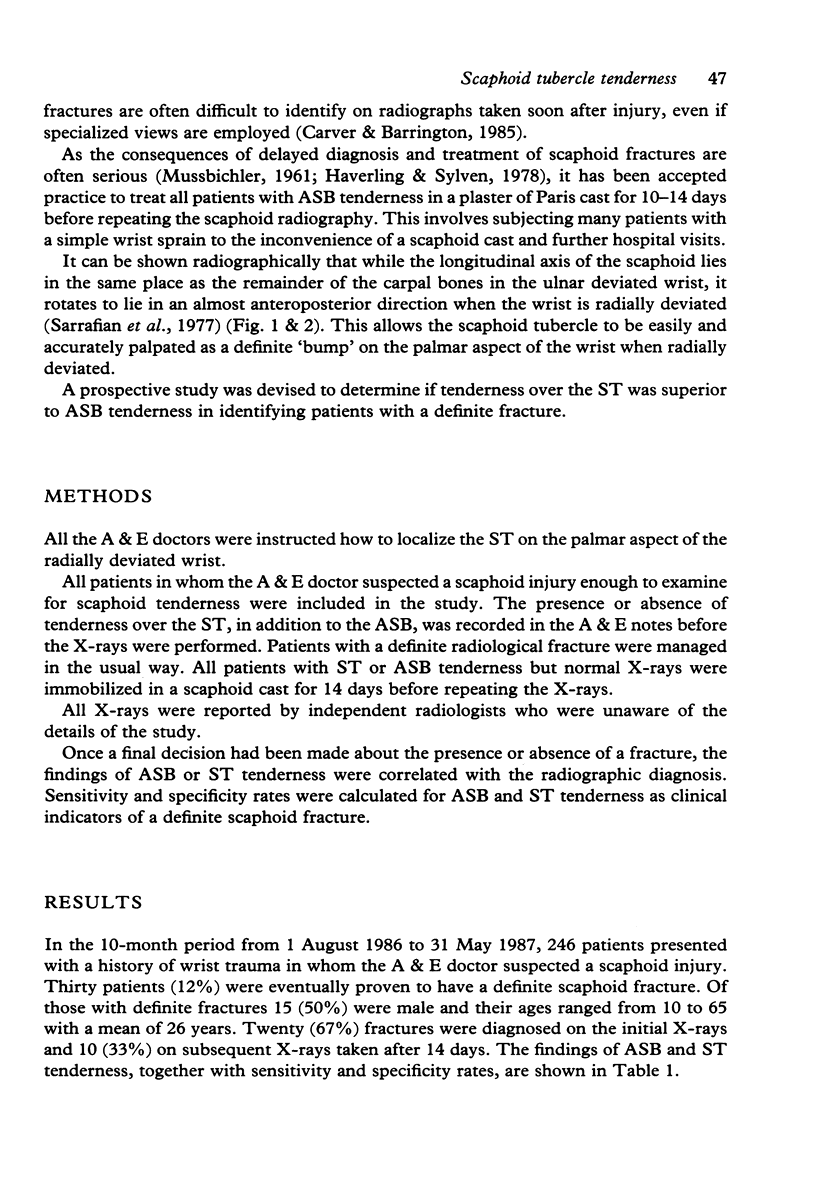
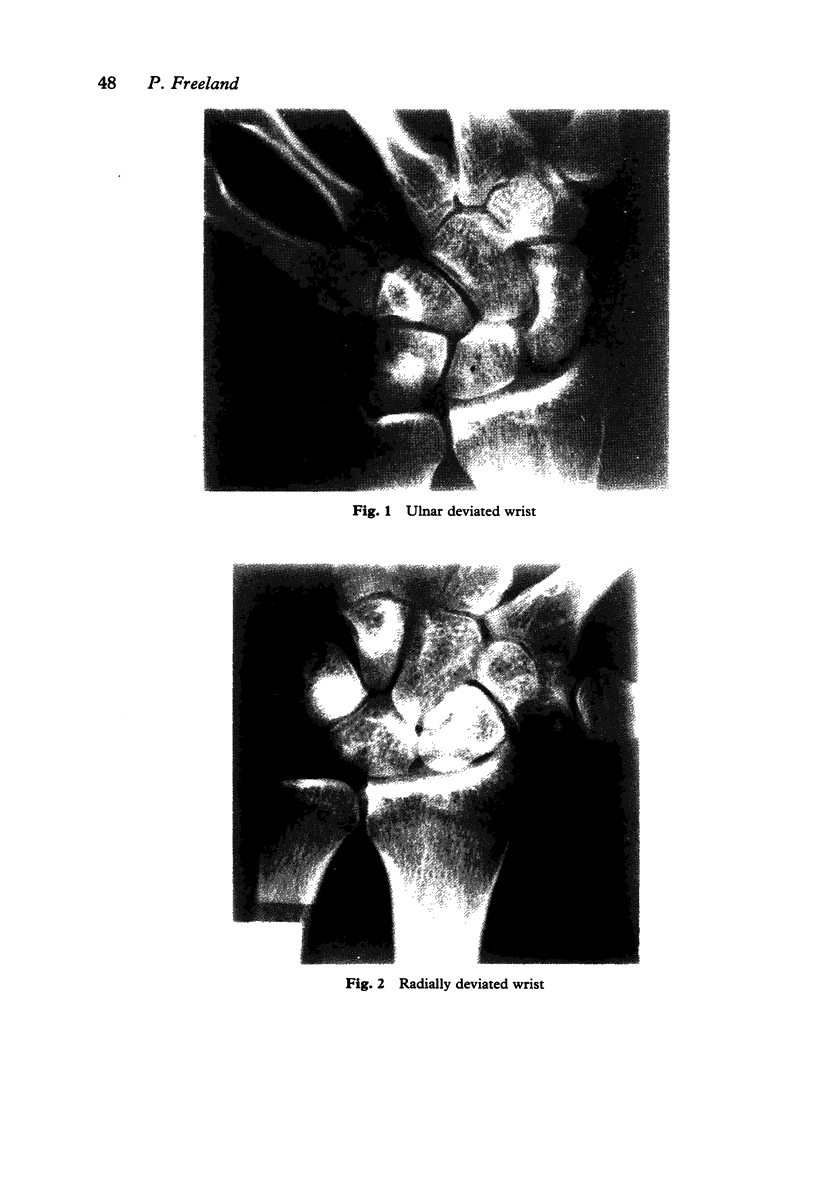
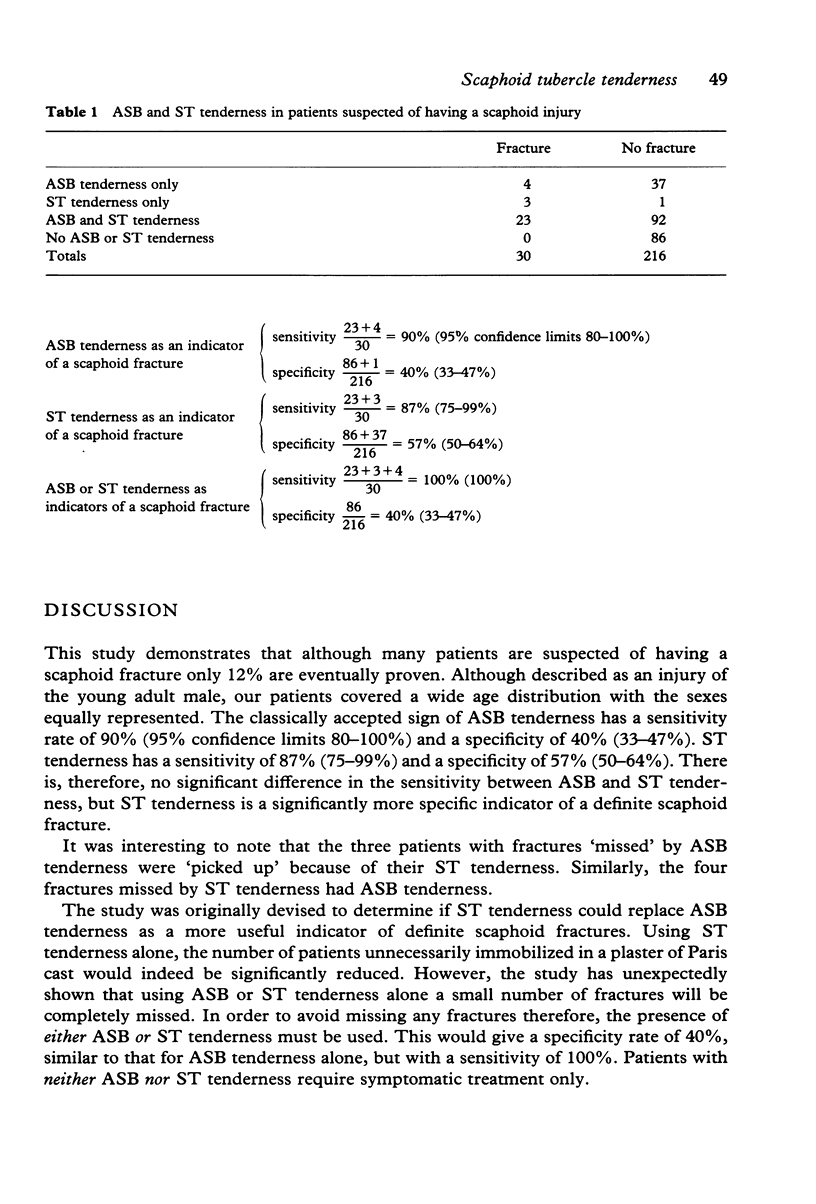
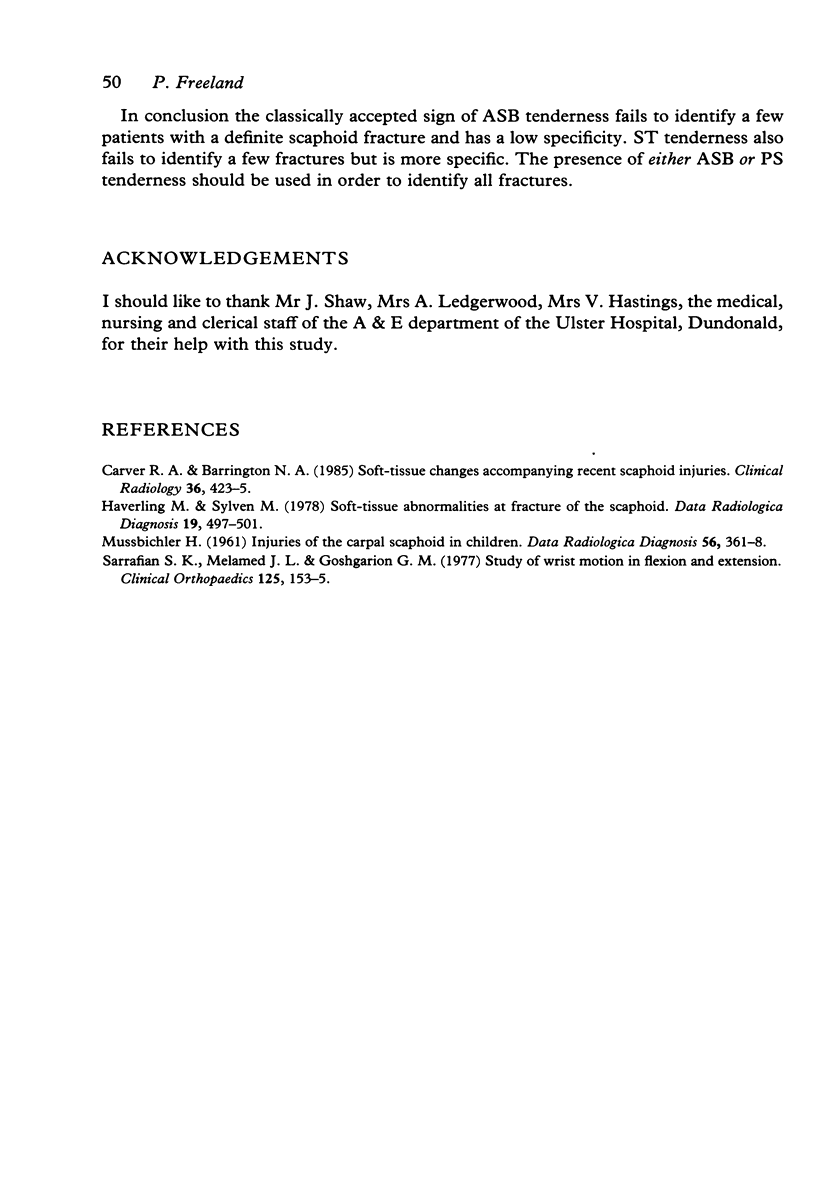
Images in this article
Selected References
These references are in PubMed. This may not be the complete list of references from this article.
- Carver R. A., Barrington N. A. Soft-tissue changes accompanying recent scaphoid injuries. Clin Radiol. 1985 Jul;36(4):423–425. doi: 10.1016/s0009-9260(85)80329-9. [DOI] [PubMed] [Google Scholar]
- Haverling M., Sylvén M. Soft tissue abnormalities at fracture of the scaphoid. Acta Radiol Diagn (Stockh) 1978;19(3):497–501. doi: 10.1177/028418517801900311. [DOI] [PubMed] [Google Scholar]
- MUSSBICHLER H. Injuries of the carpal scaphoid in children. Acta radiol. 1961 Nov;56:361–368. doi: 10.3109/00016926109172830. [DOI] [PubMed] [Google Scholar]




